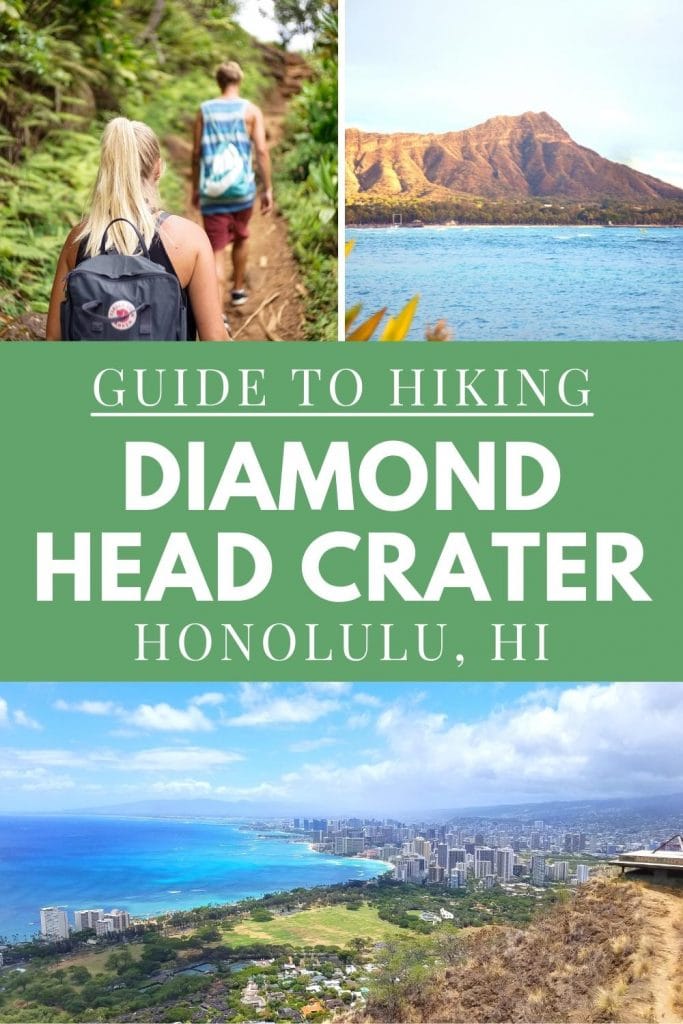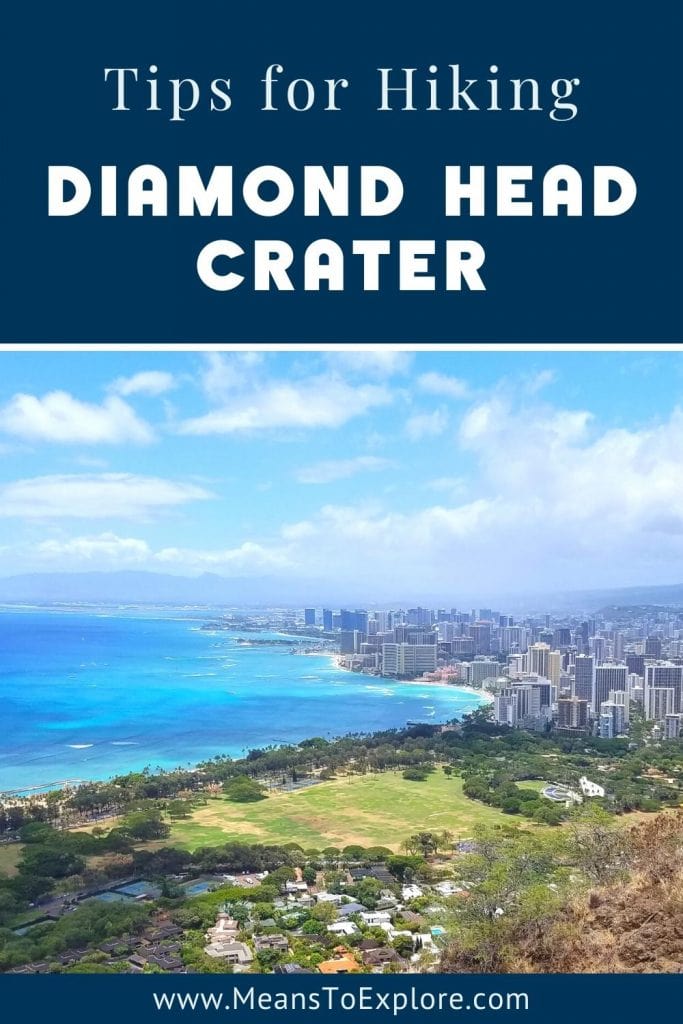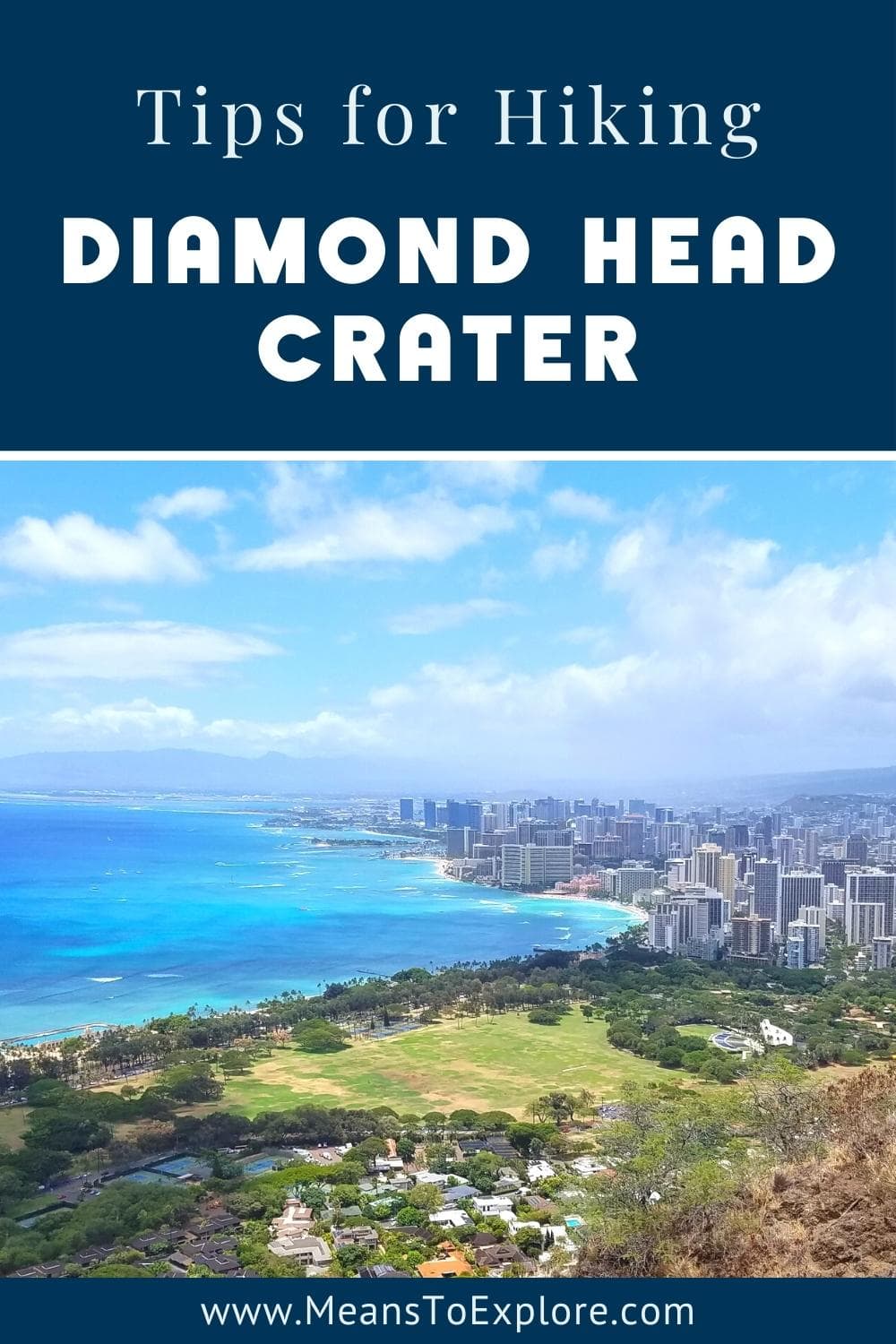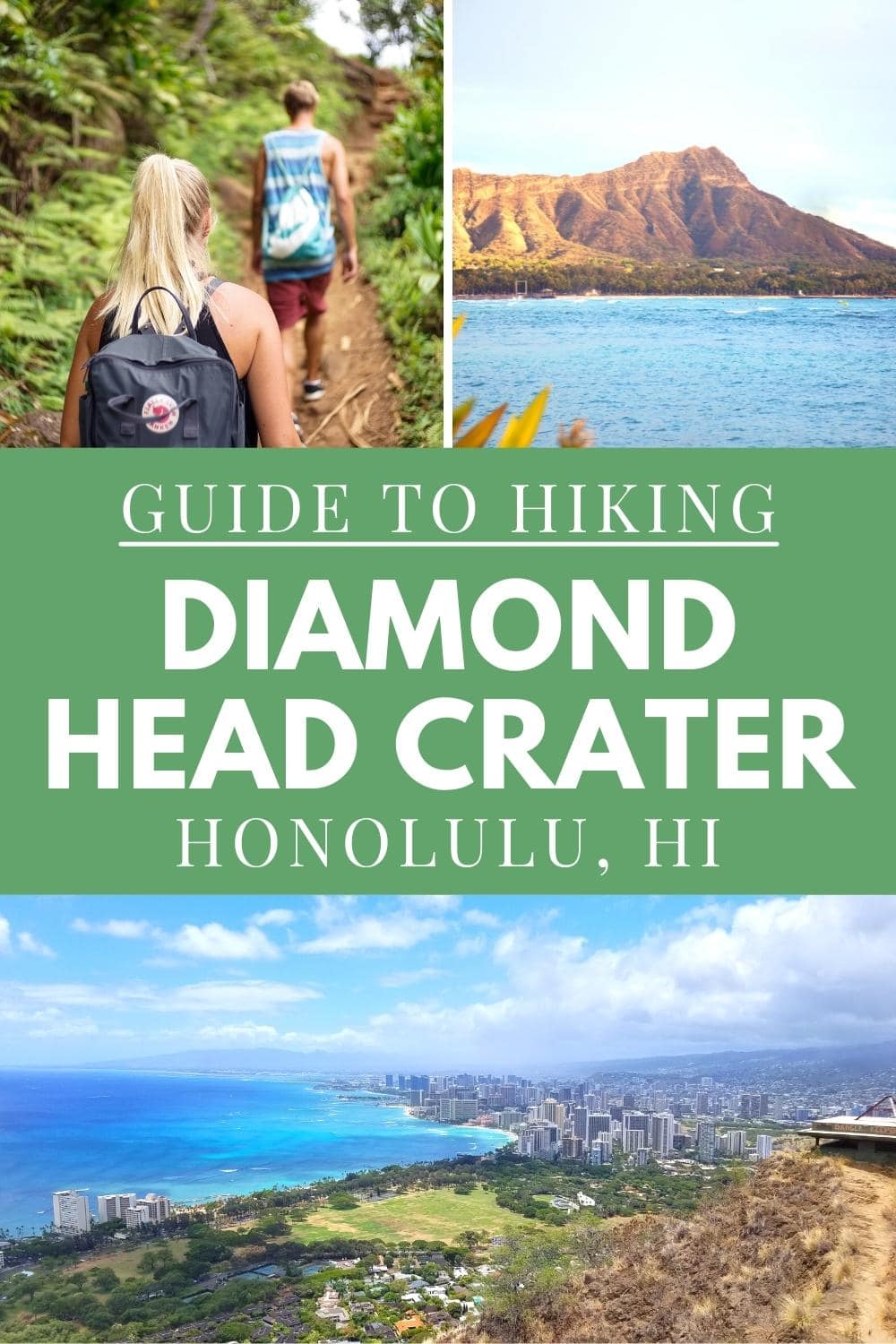Diamond Head Crater on the east end of Oahu is one of Hawaii’s most famous landmarks. It frequently tops Hawaii must-see lists, but is Diamond Head worth it or just a tourist trap?
This is Oahu’s most popular hike, and for good reason. The hike to the summit is short but steep, and absolutely worth doing for the phenomenal coastal views from above!
And that postcard photo you’ve seen all over Instagram isn’t the only view up here. You’ll be treated to spectacular views throughout your climb to the crater rim, and get to explore a military bunker at the top.
Still not sure? No problem.
Let’s look at everything you need to know before you visit Diamond Head: cost, reservations, how to get there, what to expect on the hike, and more!
This post may contain affiliate links. As an Amazon Associate and associate of other programs, I earn from qualifying purchases. This means if you click a link and make a purchase, I may earn a small commission at no extra cost to you.
Quick Answer: Is the Diamond Head Hike Worth It?
Yes, the stunning views are worth the trek up Diamond Head Crater! The climb is steep, and crowds can be annoying if you’re a fast hiker, but it’s still worth it.
The panoramic views from the crater summit are jaw-dropping.
The water truly is every shade of aquamarine blue imaginable.
Blue skies, white clouds, and that iconic view where the Waikiki Beach skyline meets the Pacific Ocean are worth the hike.
And don’t forget the historical significance as you climb through abandoned military bunkers and tunnels on your way to the top!
These unrivaled views were once used to protect Oahu’s southern shore.
Diamond Head is such a short distance from Waikiki that it’s easy to add to your sightseeing list, even if you want to get back to the hotel pool or beach ASAP after your hike.
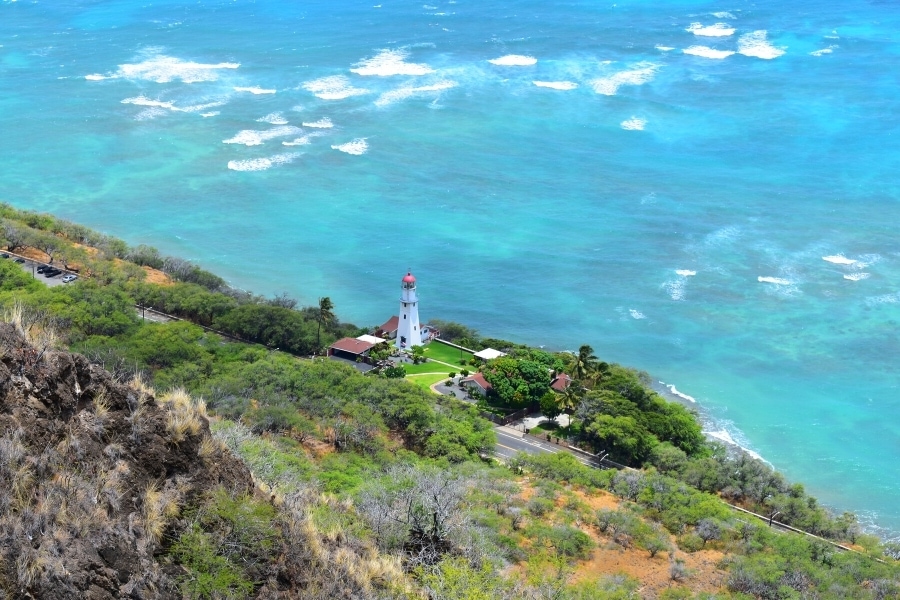
Now, popularity means crowds.
Views means height, which in this case means switchbacks and stairs.
You’ll have to decide for yourself if the crowds and stairs are worth the epic views and history.
I’ll say yes to that every time, but if you don’t like hiking, amazing views, taking photos, or history, then this probably isn’t for you.
Reservations Now Required
All out of state visitors need a timed-entry reservation to visit Diamond Head.
This wasn’t the case when I first visited, but it changed in May 2022. Hawaii is so overwhelmed with tourists every year that crowd control measures are becoming the norm.
Note that the entrance fees haven’t changed. It’s still $5 per person ages 4 and up and an additional $10 flat fee to park a car.
Hawaii residents with a valid ID enjoy free entry and parking, but there are limited parking spots.
Always check the state park website for the most current pricing and policies.
Honestly, I think reservations are a good thing here because it’ll make your experience better to have fewer people fighting for a photo in the same spot on the crater rim.
Unfortunately, it’s just one more thing you need to remember to reserve before your Hawaii trip.
Reserve your tickets on the state park website up to 30 days ahead of your visit.
You can make changes or cancelations up to 3 days before your visit, though.
If you arrive in town and find out the weather is supposed to be terrible on the day of your visit, modify your reservation. There are no refunds if it’s raining unless they close the park.
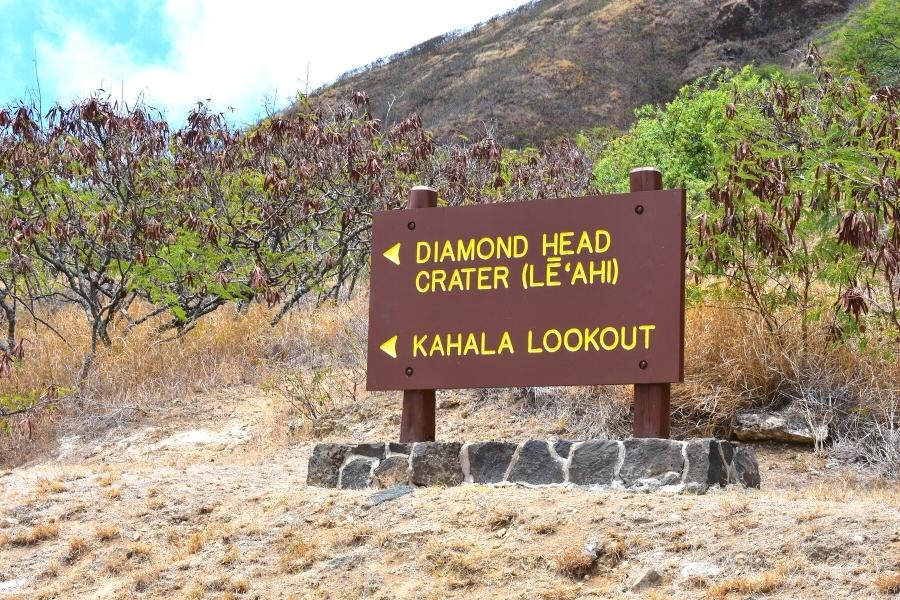
There are two types of reservations: ‘entry only’ and ‘parking & entry.’
Pedestrians (or those dropped off outside) must reserve a 1hr ‘entry only’ time slot for everyone ages 4 and older in your group.
A family of four (all older than 4) needs four entries, costing $20 total. There’s no limit on how long you can stay, but you need to arrive during your time slot.
Visitors choosing to drive and park at Diamond Head need a ‘parking and entry’ reservation.
These are 2hr time slots, requiring your arrival in the first 30 minutes and your exit by the end time on your reservation.
Parking has always been difficult to come by at Diamond Head, and now it’s actually limiting how long you can stay.
There are several other ways to get to Diamond Head, which we discuss next, so I recommend you skip the car and the extra parking fee and arrive on foot instead.
How to Get to Diamond Head Crater
You’ve got options for getting to Diamond Head!
- Cheapest – Walk
- Most Convenient – Catch a ride (trolley, bus, rideshare)
- Last Option – Drive yourself
Which you choose is really a budget and location question, but here’s what I think about each, having done this myself.
Walking
The cheapest option is to walk to Diamond Head. It’s not far from Waikiki, it’s mostly flat-ish, and the sidewalks and path are in good condition.
We stayed on the east end of Waikiki on our first visit, and the walk was about 2 miles and took us maybe 45 minutes. (No power walking involved.)
It’s a subtle, gentle uphill on the way there and all downhill on the way back. But it is more walking on top of the hike.
You might walk there and decide to Uber back. No judgement!
Good to Know: Right now, everyone enters via the Kahala tunnel on the east side of the crater, by the Kahala Overlook, with pedestrians and vehicles using the tunnel at the same time.
The tunnel is one lane only for vehicles with slim yellow cones marking the edge of the pedestrian path on the side.
It feels tight when a trolley is driving through there, but you will all fit. Just keep an eye on any little ones as you walk through the tunnel.
If you’re staying on the west end of Waikiki, closer to downtown Honolulu, then this might be farther than you’d like to walk right before a steep hike. Catch a ride instead.
Catch a Ride
The most convenient option is to catch a ride.
Rideshares, taxis, and The Bus all drop off outside of the crater, either along Diamond Head Road or at the Kahala Overlook, just outside the Kahala Tunnel entrance.
The Waikiki Trolley Green Line drops off inside the crater.
The Bus is the cheapest at $3 per ride, capping at $7.50 per day. The Waikiki Trolley is $18 for a single-line pass, and rideshares/taxis fluctuate with demand and location but typically are $10-15 each way.
The only problem with the bus and trolley is you have to follow their schedules.
For example, the Trolley Green Line is a dedicated route for moving people from Waikiki to Diamond Head, but it runs once every hour.
If you miss it by 10 minutes, you’ve got a whopping 50 minutes before it comes back around!
You can walk back to Waikiki in that amount of time. Or call a rideshare to pick you up outside of the crater.
Most rideshares will drop you off at Kahala Overlook, just outside of the Kahala Tunnel, which you’ll walk through and down into the crater.
On your way out, though, you’d be better off catching an Uber from a side street of the main road.
It gets crowded at the overlook turnaround, and it’s very much frowned upon to stop traffic on Diamond Head Road while you climb into an Uber. There are signs everywhere warning against this.
Drive Yourself
Your last option should be driving and parking a car.
There’s limited parking available, and the new timed-entry reservation system includes an exit time for cars.
That means you have to arrive, park, hike up, take pictures, hike down, get a pineapple dole whip, and leave all within your 2hr time slot.
It’s doable, especially if you come early, but it might feel rushed, especially for slower hikers.
Good to Know: Yes, pedestrian entry only tickets are only 1hr time slots, but you can leave at your leisure. You just have to start your hike within your time slot.
Diamond Head is so close to Waikiki, that I recommend you skip the car/parking/rushed time.
Visit on a day you’re exploring around Waikiki, and do the road trip out to the east on its own another day.
Hiking Diamond Head Crater: What to Expect
Alright, you’ve got your reservation, decided how to get to Diamond Head, and now you’re ready for the hike!
What should you expect?
I’m not gonna lie to you: there are some steep sections on this hiking trail, but it’s not all bad.
The Diamond Head trailhead is on the crater floor, just past the small visitor center/gift shop, picnic shelter, and restrooms.
A small guard shack shelters a park ranger who will check your ticket, or ID if a Hawaiian resident, and they’ll wave you through.
The trail begins as a wide paved path passing through a vegetated area of shrubs and tall grass. A pleasant walk that anyone can handle.

As you reach the side of the crater, the trail becomes a series of switchbacks to climb the side of the crater.
The ground is no longer paved, but rather uneven with roots and some loose gravel. I highly recommend sturdy shoes.
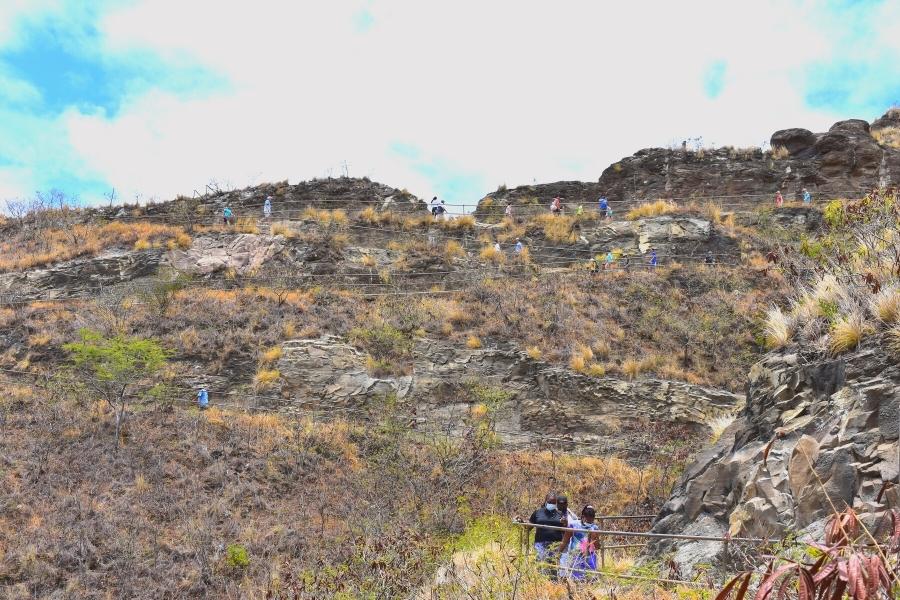
Pause at the lookout for a taste of the incredible views to come.
This next part is the steepest part of the trail. The majority of the elevation gain is in this next section.
When you’re ready, climb the first set of stairs.
Don’t feel rushed if people are behind you. This is a two-way staircase and they can pass if they want. The stairs will lead to the tunnel entrance.
If you need a breather before heading into the tunnel, there is a small spot on the right to pull over and catch your breath. Another good photo opportunity, too.
Next, climb through the tunnel.
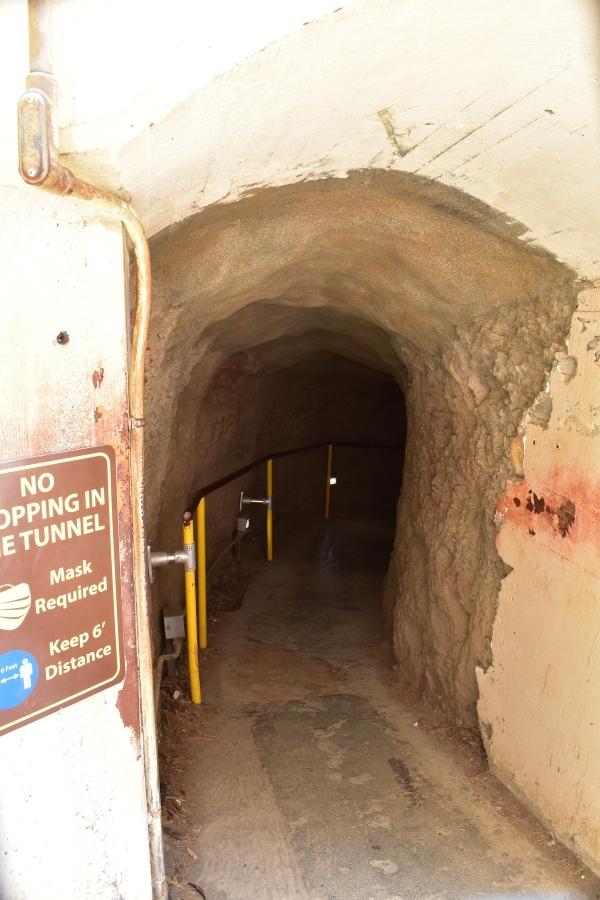
The tunnel is dimly lit, but passing is discouraged even though it is also a two-way path. There are no stairs here, just a steep incline.
When you exit the tunnel at the top, DON’T PANIC.
You’re going to see another set of steep stairs to the right, BUT turn left and there is a lookout with some seating. If you need the break, turn left and take the break.
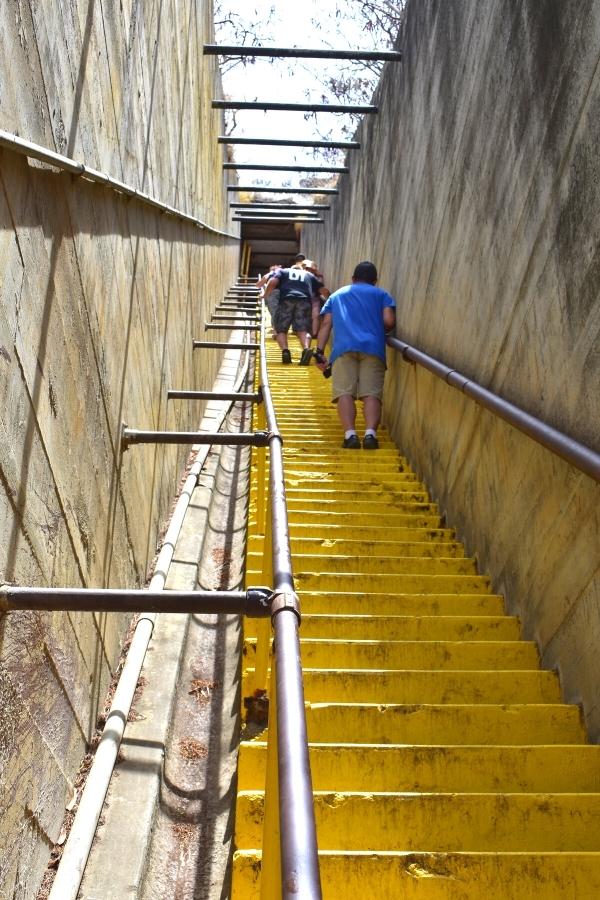
The recommended route per the state park brochure is to exit the tunnel and immediately climb the stairs to the right.
They are trying to address congestion and create a one-way loop around the summit.
That’s all good and fine, but you can take a breather at the outlook to the left first if you need it.
When you’ve recovered, climb the second set of stairs into the bunker.
This is technically a fire control station, but it feels like a bunker and looks like a bunker. A short tunnel leads to a steel spiral staircase. Climb it to the observation level.
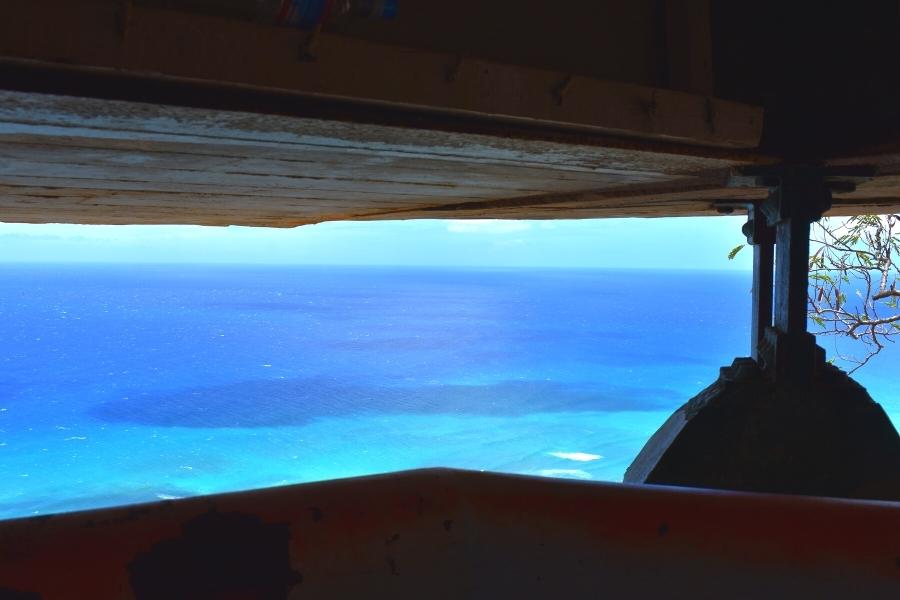
From here, you will better understand the military significance of Diamond Head to the coastal defense system. The observation level is open to the ocean but with a large concrete mushroom-top roof that’s covered with earth.
People inside the bunker can see out to sea for miles, but someone on a ship offshore would never know this observation bunker is here.
To the left is a small ladder to help you climb under the gap and out onto the side of the bunker. Watch your head!
Pro Tip: If you don’t want to climb through that gap, retrace your steps back down the spiral staircase, out of the bunker, and back down the steep steel staircase. From here you can continue straight and follow the stairs around to the summit.
From atop the fire control station, make your way to the official Diamond Head Crater Summit.
This is where you’ll get that iconic shot of Waikiki, as well as 360° views around the crater. Hold on to your hats! It’s usually very windy up here!
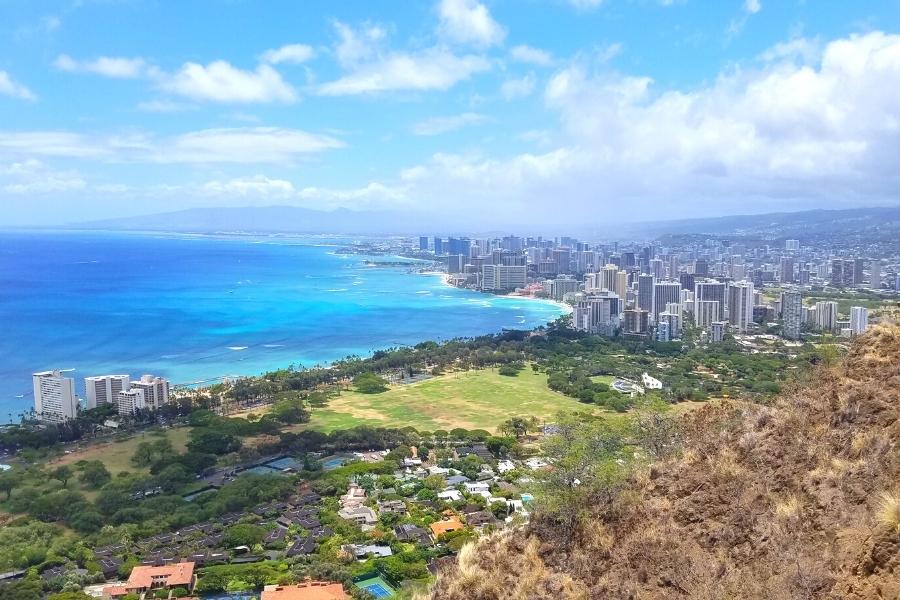
Follow the stairs down the ridge, past the helicopter pad. Take note of the signs that declare this spot off limits. That won’t stop some people, but you’re smarter than them.
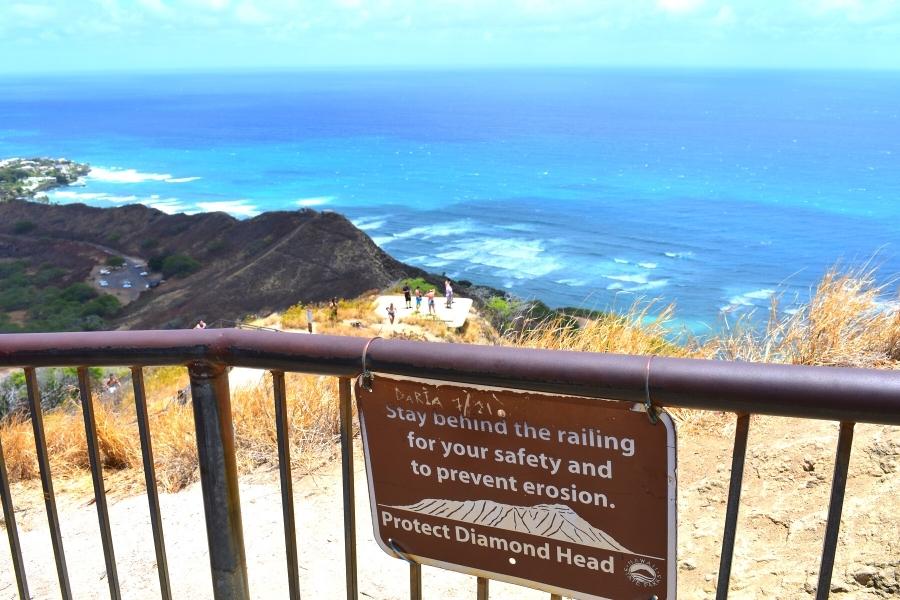
At the bottom of these stairs, turn right for one more amazing overlook. This one showcases views to the east to Koko Head and beyond, on a very clear day to the nearby islands of Molokai, Lanai, and Maui.
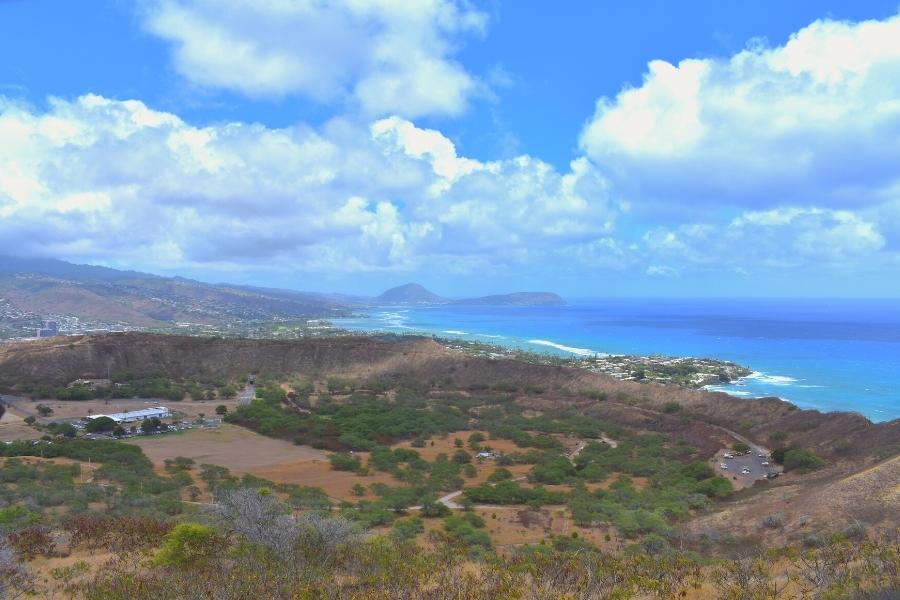
Once you’ve had your fill of views, walk back along the ridge, past the stairs to the summit, and you’ll end up at the overlook by the tunnel entrance.
From there, it’s all downhill to the crater floor. The walk down is always faster than the walk up!
Hours & Amenities at Diamond Head State Monument
Hours: 6AM to 6PM
Last Entry: 4:30PM
Just a few basic amenities:
- A small visitor center/gift shop
- Real restrooms, not just pit toilets. Lines can be long on busy days.
- A picnic shelter provides shade for a half dozen picnic tables, but you better believe those tables get snapped up quick for their shade.
- Several benches and a few more picnic tables scattered about under trees for shade
- Enjoy a delicious pineapple dole whip from the local vendor food truck, a well-deserved refreshment after all that hiking! Try to snag a spot under a tree, but please don’t feed the birds!
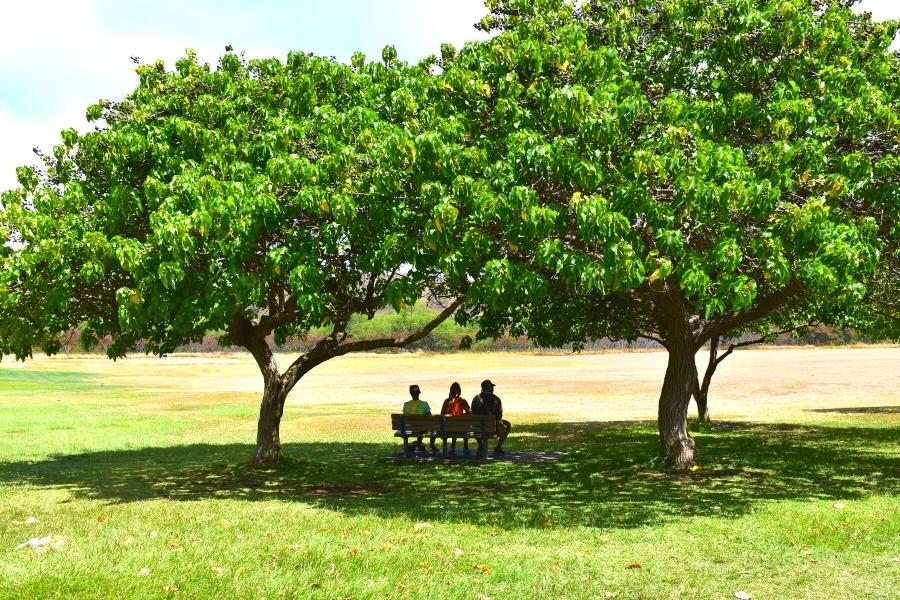
Tips for Hiking the Diamond Head Trail
- Sun protection. Sunglasses, a hat, and sunscreen. The trail is mostly exposed, little to no shade.
- Real shoes. This is not the trail for flip flops. Sneakers are sufficient.
- Go early to beat the heat and crowds, but know that it’ll still be hot. Gates open at 6am. I know that sounds early, but if you’re visiting from the east coast, that’s 11am back home. Do this hike one of your first days in town, before you adjust time zones.
- Bring plenty of water. This hike is no joke, and there are no facilities at the top. It is always hot in Hawaii. Always bring a full water bottle.
- Not ADA accessible, nor suitable for strollers. Not like a handful of stairs that you and a partner could carry a stroller up. Like, A LOT of stairs. Don’t try it.
- Follow all warning signs. The summit includes old military bunkers built into the craterside. It is super fun to crawl around in them, but pay attention to all warning signs. You can smack your head if you don’t watch it. And you might think it’s a great photo on that helipad on the bunker roof, but it’s also a great way to fall to your death, or get seriously injured and force a rescue worker to put their life in danger to come get you off the side of a cliff. Just don’t.
- Bring some cash. Reward yourself after your hike with a pineapple dole whip or a refreshing drink from the nearby Pineapple Stand. The gift shop also has some souvenirs.
>> We didn’t realize how much Hawaiians prefer cash. Check out all our tips for visiting Oahu. <<
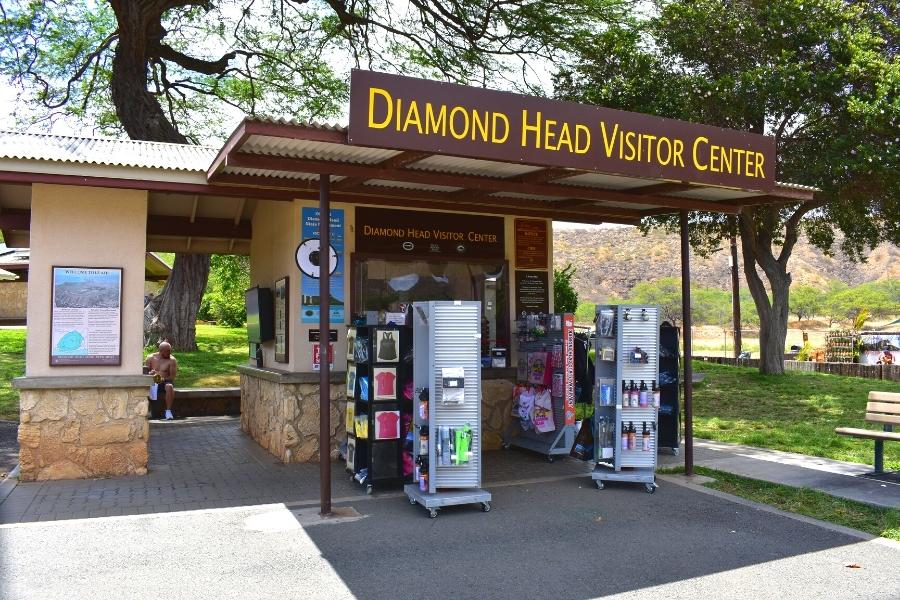
Diamond Head Crater Hike FAQs
The state park FAQs have all the basic info you need, but here are a few more, based on my experiences.
How long does it take to hike the Diamond Head Summit Trail?
An average visit is at least 1.5-2 hours total, around 45-60 minutes to get to the summit. There are some switchbacks and a couple of serious stair sections at the top that will slow down an average hiker.
Take breaks as needed as you climb. I took photography breaks because there are good views inside the crater, but they also serve double duty and let me catch my breath before continuing to the next great viewpoint.
Are there places to rest along the trail?
There are not a lot of places to sit and rest along the way. There are a couple of low walls and rocks that’ll work until you get higher up where there are a few benches for sitting and admiring the view.
When is the best time of day to visit Diamond Head?
The morning has the coolest temperatures and smallest crowds, but it will always be hot while hiking and you’ll never have it all to yourself.
Credit card or cash?
Bring both! The park doesn’t accept cash now that they have the online reservation system, but the food trucks with tasty treats often prefer cash.
Enjoy rewarding views of Waikiki from atop Diamond Head Crater!
You can’t beat these views! The Diamond Head hike is worth the effort, and one of the best things to do in Waikiki.
Want to learn more about the military history of Oahu? You can’t miss visiting the Pearl Harbor National Memorial.
More Hawaii Travel Resources
- Haleakala Sunrise vs Sunset: Which is Better?
- 17 Helpful Tips for Surviving the Road to Hana {Learn from Our Mistakes!}
- Is Driving the Road to Hana Worth It? {Pros & Cons}
- Where to Find the Best Restaurants on the Road to Hana
- The Back Road to Hana: Is It Really That Bad? {Pros, Cons, & Tips}
- Hiking Diamond Head Crater {Complete Guide}
- 10 Useful Tips for Your First Visit to Oahu
- 21 Fun Things to Do in Waikiki {Honolulu’s Most Popular Neighborhood}
- How to Visit Pearl Harbor (without a tour!) {Complete Guide}
- Why I Love My Full-Face Snorkel Mask {REVIEW: Aria QR+ Mask}
- 21 Unique Things to Do in Maui
- Reef Dancer vs Atlantis Submarine: Which Maui Sub Tour is Best?
- Is There a Ferry from Honolulu to Maui?
Happy travels!

About the Author: Rachel Means
With six-figure student loan debt and only 10 PTO days per year, Rachel started traveling the world. A decade later, she’s paid off her loans, changed careers, and been to 36 US states and 14 countries. She’s an expert at planning and budgeting for travel and loves to help others do it, too! Read her full story here.
Share it!
